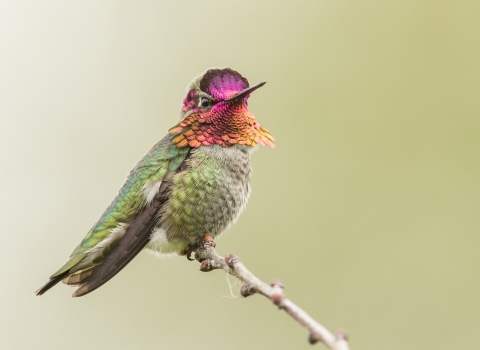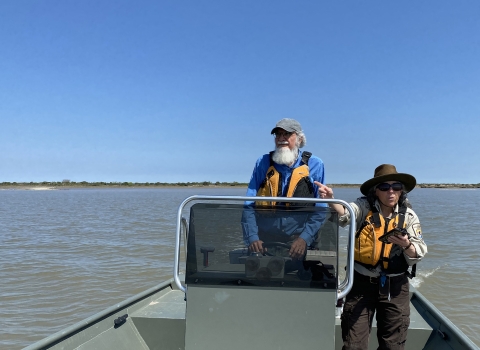The U.S. Fish and Wildlife Service today announced ten Great Lakes fish and wildlife restoration projects totaling $571,750 for tribal governments, five states and the Great Lakes Fishery Commission. The projects promote partnership efforts to help replenish habitat and improve natural resource management in the Great Lakes Basin and will be funded under authority of the Great Lakes Fish and Wildlife Restoration Act, which launched the program in 1998.
“I’m very proud that the Fish and Wildlife Service is able to be a catalyst in this vital international program that is so critical to the Great Lakes area,” said Steve Williams, the Service Director. “There are enormous treasures, enormous fisheries and enormous economics all at play here. This work has never been more important.”
The 10 approved projects focus primarily on the rehabilitation of sustainable fish populations and include the study of various species of fish, their reproduction, distribution, movement, diet and habitat within the Great Lakes ecosystem. One project will develop a Great Lakes-wide geographic information system to help drive future habitat restoration efforts. Another will map lake trout spawning reefs in Lake Michigan and study spawning of fish stocked by national fish hatcheries.
Another project will attempt to determine whether steel-hulled barges help fish move past obstructions such as the electric barrier designed to stop the Asian carp from moving to Lake Michigan through the Chicago Sanitary and Ship Canal.
Under sponsorship of Michigan, New York, Illinois, Wisconsin, Ohio and member tribes of the Chippewa-Ottawa Resource Authority (CORA), funds will go to the University of Michigan, the U.S. Geological Survey, the State University of New York in Freedonia, the University of Illinois, the University of Wisconsin in Milwaukee and the Great Lakes Fishery Commission. Between 1998 and 2002, more than 50 organizations have brought matching funds and expertise to the Great Lakes restoration program.
The Fish and Wildlife Service contributes up to 75 percent of the cost of the projects, with matching funds this year coming from the Michigan Department of Natural Resources, Illinois Natural History Survey, Ohio Department of Natural Resources, CORA, the University of Illinois, the University of Wisconsin, the University of Michigan, the State University of New York, the University of Windsor, the Ontario Ministry of Natural Resources and the Great Lakes Fishery Commission. The Service has provided more than $2.2 million for similar projects since 1998.
Williams said the proposals presented this year represent a wide range of needs related directly to resource conservation issues identified in the 1995 Great Lakes Fishery Resources Restoration Study Report to Congress and by the Joint Strategic Plan for Management of Great Lakes Fisheries.
Fish and wildlife restoration proposals are developed each year by the Service and the Great Lakes Fishery Commission. The Council of Lakes Committee, a 21-member body representing state, tribal and Canadian provincial agencies, recommends proposals for funding to the Service Director.
The Service’s Great Lakes program includes Minnesota, Wisconsin, Michigan, Illinois, Indiana, Ohio, Pennsylvania and New York and 46 Service field stations in the Great Lakes Basin.
The U.S. Fish and Wildlife Service is the principal federal agency responsible for conserving, protecting and enhancing fish, wildlife and plants and their habitats for the continuing benefit of the American people. The Service manages the 95-million-acre National Wildlife Refuge System, which encompasses 540 national wildlife refuges, thousands of small wetlands and other special management areas. It also operates 69 national fish hatcheries, 64 fishery resource offices and 81 ecological services field stations. The agency enforces federal wildlife laws, administers the Endangered Species Act, manages migratory bird populations, restores nationally significant fisheries, conserves and restores wildlife habitat such as wetlands, and helps foreign governments with their conservation efforts. It also oversees the Federal Aid program that distributes hundreds of millions of dollars in excise taxes on fishing and hunting equipment to state fish and wildlife agencies.


